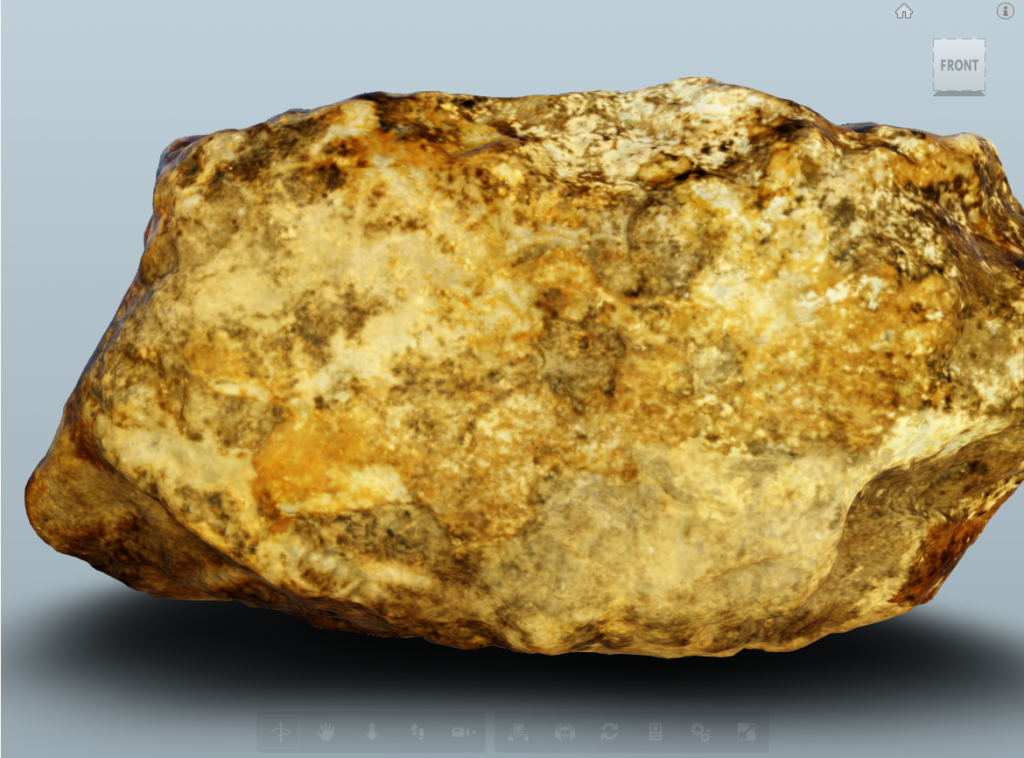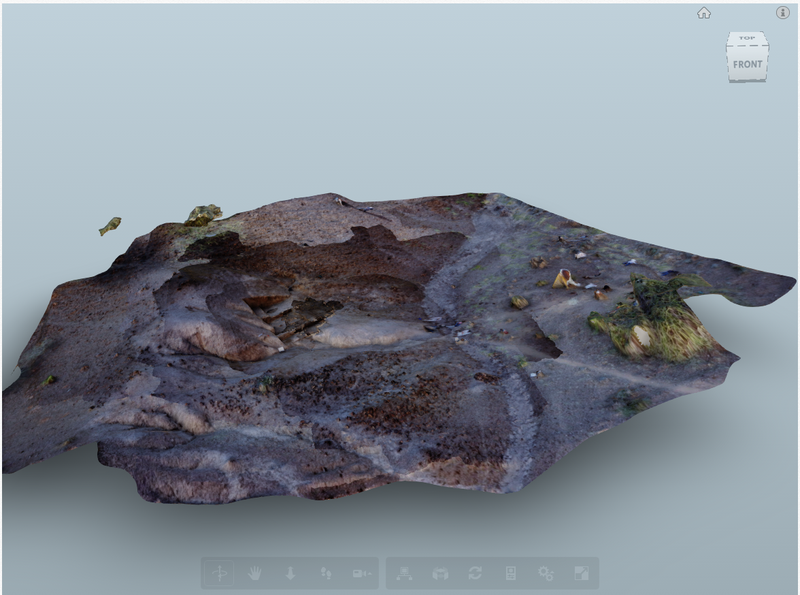The increasingly more sophisticated tools that allow us to progress scientifically and technologically, that assist us in moving more confidently into the future, also provide us with methods for uncovering and preserving the past, including the distant past. 3D digital technology and 3D printing have been indispensable in this regard and are now being used to help us understand how and when the first tool-making, a human effort to make life easier and work more efficient and less laborious, first evolved.

One of the oldest tools known to man. Discovered by scientists in Kenya, the stone tools date back to 3.3 million years
Scholars who study human evolution have hypothesized for some time that the very first stone tools were produced by the genus (biological classification) Homo, the hominids that lived around 2.5 million years ago. To provide some perspective, Homo erectus or “upright man,” the first hunter-gatherer societies and the first hominids to use fire, appeared a half-million years after that. Homo sapiens, anatomically modern humans, emerged roughly 0.2 million years ago and modern humans began migrating from Africa approximately 60,000 years ago.
The earliest toolmakers were more technologically sophisticated than anyone had previously thought, as recent discoveries at a large-scale and decades-long archaeological project now suggest. 3.3 million-year-old stone tools, the oldest ones we now know of, were found by Dr. Louise Leakey and a team of dedicated paleoarchaeologists in Northern Kenya. An article concerning this historical find was recently published in Nature Magazine (May 20, 2015). The find pushed the date of the earliest tool production back by 700,000 years.
Now, thanks to the collaboration of Dr. Leakey and the American multinational software corporation Autodesk, people around the world will be able to share in this remarkable discovery. Through the use of Autodesk’s free, cutting-edge software, Memento, 3D digital replicas of these invaluable artifacts were made. With Memento, technicians were able to transform photos and scans of the stone tools into 3D models, which can be viewed on the web or 3D printed for display and further study.
Dr. Leakey is the granddaughter of the renowned Kenyan archaeologist and paleoanthropologist, Louis Leakey, who died the year she was born. The latter’s work and major discoveries in the Olduvai Gorge in Tanzania of evidence of early humans living there as long as 1.9 million years ago have been instrumental in expanding our understanding of the evolution of early humans. Louise’s parents, Maeve and Richard Leakey, were also paleoarchaeologists and she has followed in the footsteps of her esteemed predecessors.
For the past two decades, Dr. Leakey has been working in Koobi Fora, a region that gets its name from the Koobi Fora Ridge, located on the eastern shore of Lake Turkana in Northern Kenya near the border of Ethiopia. The Koobi Fora Research Project has been responsible for some of the most significant hominid-related fossil discoveries of the past 35 or so years. The oldest stone tools were found at Lomewki 3, a 3.3 million-year-old archaeological site, which has inspired a new name for the period in which they were made, the Lomekwian.
Dr. Leakey has also been a pioneer in the use of digital and 3D printing technology to document fossil collections and, in many instances, to create not only 3D digital models of objects, but also 3D printed replicas. In addition to creating 3D models of the tools, a tech team also produced a 3D model of the site itself. Using a Sony camera mounted on a kite, the Lomekwi 3 site was photographed and then converted into a 3D model using Memento.
“Autodesk Memento has been instrumental in my work,” said Dr. Leakey, “allowing me to share fascinating evidence of human evolution with people around the world.” She continued, “Memento is powerful, yet simple enough for a non-CAD expert to use. It has allowed me to operate everything on my own, without relying on a team member or CAD expert, which suits my hands-on style of working.”

Africanfossils.org provides models of fossils for download and 3D printing. The cardboard model (right) was made using the free modeling app, Autodesk 123D MAKE, to print patterns from the downloadable files. PDF templates are also available for download to print on a home printer to glue the pattern on recycled cardboard and cut the pieces for assembly. Center photo credit: Robert Clark @robertclarkphoto.
Dr. Leakey is heading an initiative to make available in a virtual laboratory digital models of not only the stone tools, but also other important fossil collections. In the virtual lab African Fossils, both the public and scholars can explore and interact with the objects via the web and can also download and 3D print the models.
Further, says Autodesk concerning African Fossils, “The site also offers an opportunity for scientists to get an overview of the available fossils and to enter scientific research discussions with the Turkana Basin Institute and Dr. Leakey’s team.” As of today, over 100 fossils have been made available online through the site and additional ones are being added frequently.
Since 2011, when Dr. Leakey began collaborating with Autodesk after being awarded a grant to begin digitizing fossils from the National Museums of Kenya collection, she has added to the collection of fossils now available online. What do you think about this incredible technology? Discuss in the 3D Printed Stone Tools Forum thread on 3DPB.com.
Subscribe to Our Email Newsletter
Stay up-to-date on all the latest news from the 3D printing industry and receive information and offers from third party vendors.
You May Also Like
Precision at the Microscale: UK Researchers Advance Medical Devices with BMF’s 3D Printing Tech
University of Nottingham researchers are using Boston Micro Fabrication‘s (BMF) 3D printing technology to develop medical devices that improve compatibility with human tissue. Funded by a UK grant, this project...
3D Printing Webinar and Event Roundup: April 21, 2024
It’s another busy week of webinars and events, starting with Hannover Messe in Germany and continuing with Metalcasting Congress, Chinaplas, TechBlick’s Innovation Festival, and more. Stratasys continues its advanced training...
3D Printing Webinar and Event Roundup: March 17, 2024
It’s another busy week of webinars and events, including SALMED 2024 and AM Forum in Berlin. Stratasys continues its in-person training and is offering two webinars, ASTM is holding a...
3D Printed Micro Antenna is 15% Smaller and 6X Lighter
Horizon Microtechnologies has achieved success in creating a high-frequency D-Band horn antenna through micro 3D printing. However, this achievement did not rely solely on 3D printing; it involved a combination...































